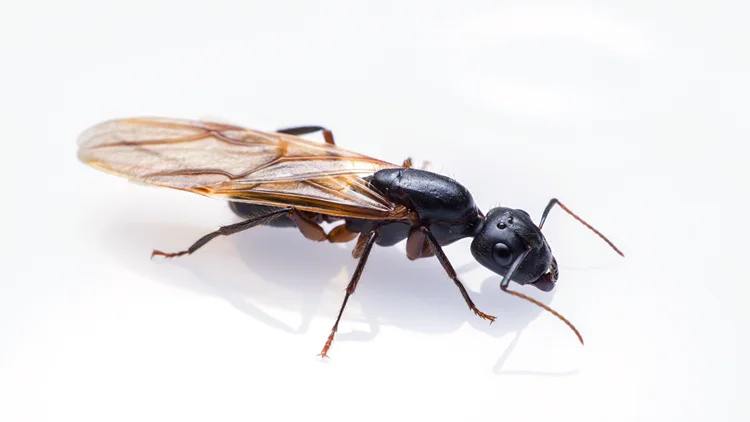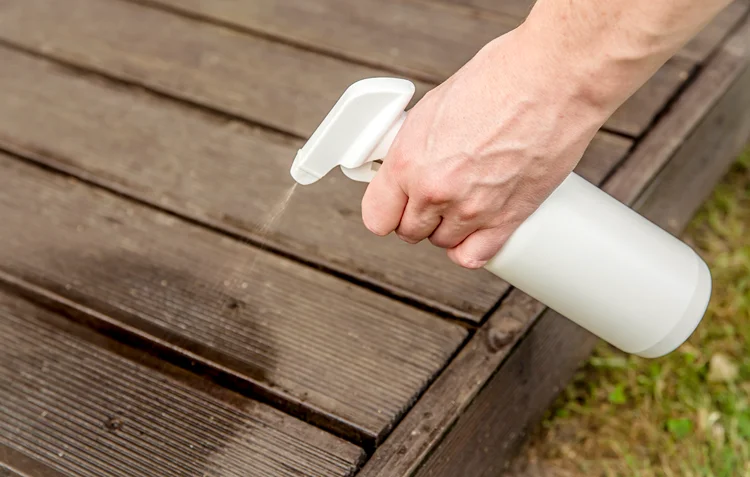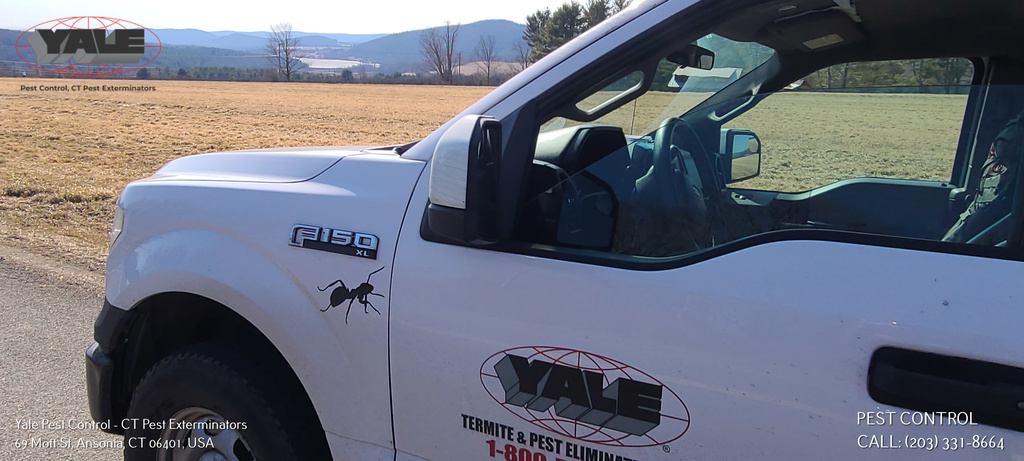
Having a carpenter ant infestation at home is already a huge problem, but spotting a flying ant on a property might be even worse. Although these swarming ants might seem to appear out of the blue, they’re actually a sign that an ant colony nearby plans to build a new carpenter ant nest – which is why homeowners should get rid of flying ants before it’s too late.
So how should homeowners eliminate the flying carpenter ants in their house? Winged carpenter ants look for potential nests, so it’s crucial to get rid of them before they start reproducing. Homeowners can do this using a vacuum cleaner, commercial pesticide, bug zapper, or sticky tape. It’s also important to remove all of the things that attract them, such as sweet food, damp wood, old colonies, and water leaks.
According to a survey by the National Pest Management Association, about 66% of the ant problems they encounter are caused by carpenter ants. The appearance of this particular ant species is concerning because they do more than just steal the food in the pantry – they also attack any wet wooden structure around the house to create a satellite nest.
Carpenter ants typically have black bodies with a narrow middle section, but mature ants may develop wings when it’s time to reproduce. Winged ants are often mistaken for flying termites because of their similarities, but they have distinguishing features that set them apart – a winged termite has noticeably shorter legs, equal wing length, straight antennae, and straight waist while a winged ant has longer legs and antennae, unequal wings, and a pinched waist.
Winged carpenter ants only appear around spring. They usually choose places that are near their parent colony and have all the things they need to survive. They’re also attracted to heat, so they swarm near light sources.
The appearance of flying ants is alarming because it means their parent nest is already full, forcing them to create satellite nests and reproduce there. It’s only a matter of time before the carpenter ants invade your home, so it’s crucial to get rid of flying ants before they shed their wings and cause bigger problems.

The priority of swarming winged ants is to mate and reproduce, so it’s unlikely for people to get ant bites when they find swarms near their property. But since these flying insects are looking for a good place to start a satellite colony, then homeowners must nip the ant problem in its bud by getting rid of flying carpenter ants as soon as they’re spotted.
Vacuuming flying ants is one of the best ways to immediately handle the problem. Both full-sized and handheld vacuums work well, but make sure to use a hose attachment to reach more of the swarming ants.
The downside of using a vacuum cleaner to eliminate carpenter ants is that the device doesn’t really kill the winged ants. Homeowners must remove and replace the vacuum bag immediately to prevent the pests from escaping. Make sure to dispose of the vacuum bag or its contents properly so that the winged ants won’t survive and return to your home.
There are a ton of different commercial insecticides in the market that instantly kills off various insects, so there’s a good chance that they work on flyings ants too. Choose an aerosol pesticide with an easy-to-direct spout to reach more winged ants as they fly.
Remember that some commercial aerosols have harmful chemicals, so make sure to follow the instructions on the label to avoid accidents caused by misuse. Don’t point the nozzle of the pesticide on anyone or any animal in the household. Some pesticides might also be illegal in some states, so make sure to verify if you’re using an insecticide that’s legal in your location.
If you want a safer alternative than store-bought pesticides, create an effective spray solution at home using peppermint oil and dish soap. The soap clings to the flying insect’s body, causing them to dehydrate and die. Dilute a few drops of dish soap in water and put the solution in a spray bottle. You can also add peppermint oil to make the mixture more effective since peppermint oil suffocates flying ants.
Electric bug zappers are highly effective in killing a variety of flying insects, including the flying carpenter ants that are attracted to heat and light given off by the device. Just hang the bug zapper in an area where flying ants might swarm and let the device kill the winged ants that go near it.
When setting up the bug zapper, make sure that it’s out of reach of children and pets. The electricity it produces won’t cause severe harm to most pets and children, but the shock it causes might still be painful for them. Make sure to follow the instructions by the device’s manufacturer to avoid misusing it and causing accidents.
Laying a strip of sticky tape around food sources helps trap foraging ants and prevent winged ants from flying around. When using this control method, make sure that the sticky side of the tape is up and it’s placed near the food source but not directly beside it.
However, the problem with using sticky tapes is that they don’t work on flying ants as they do on crawling worker ants. There’s no guarantee that the ants might get trapped since they travel by flying. If you want to still use sticky tape to trap the winged ants, it’s better to have other carpenter ant control methods in place.
Pests like fire ants, ghost ants, and carpenter ants choose nesting places that provide them with things they need to survive. Eliminating these essentials might not ensure that no flying ants will visit your home, but it certainly makes the property a lot less attractive for these pests. Make sure to get rid of these things that lure ants to the property:
Flying ants are only a start or a sign of a bigger ant problem. To get rid of these pests for good, it’s better to turn all the pest control efforts into exterminating the carpenter ant colony inside or outside the house. Here are some of the most common natural repellents and home remedies used to eliminate the flying carpenter ants and their colony:
Boric acid and Borax are made of the same compound but in different formulations. Borax is typically found in different cleaning products, while boric acid is the more processed and refined version of this compound. Both can be used by homeowners to get rid of carpenter ants because they work in the same way – when consumed by ants, the compound damages their digestive system until they die.
Boric acid or Borax is usually mixed with syrup, sugar, or honey to make an ant bait station. The mixture lures the worker ant out so it can bring the bait back to the colony, killing off multiple carpenter ants at once.
There are plenty of essential oils used as insect repellents, but the most popular ones are peppermint and cinnamon oil. They’re usually diluted with water and sprayed on areas with carpenter ant activity to keep the pests away.
But unlike insecticides and boric acid solutions that kill carpenter ants, essential oils simply disrupt the ant trail. This confuses the foraging ants and prevents them from returning to the food source or their colony. Essential oils by themselves aren’t enough to get rid of the carpenter ants, so other pest control measures should be in place.
Diatomaceous earth is another natural and non-toxic pest repellent that keeps carpenter ants away. It’s made of crushed, fossilized algae with microscopic pieces that are sharp enough to cut through the exoskeleton of ants and other insects. Once their other shell has been pierced, the ants slowly dehydrate and die.
When using diatomaceous earth, make sure that it’s food grade so it’s safe to use even if there are kids and pets at home. The granules should be placed next to food sources, but not too close that they get wet.

Flying ants only appear briefly, but a few of them can escape your watch and reproduce in their new nest inside your home. If you suspect a carpenter ant infestation at home, call a pest control company that specializes in ant extermination immediately – like Yale Pest Control.
Our team at Yale Pest Control have years of training and experience in getting rid of different household pests like flying termite, fire ant, carpenter ant, and more. We always make sure to prioritize our client’s safety by using pest control techniques that are effective in exterminating pests without causing harm to humans and the environment. Contact us today to request a quote.